texTILE
Globally, an estimated 92 million tonnes of textile waste is created each year (Beall, 2020), with the fashion industry being responsible for 10% of global carbon emissions (IBRD, 2019). This research focuses on the problem of discarded polyester clothes and how to upcycle the material into an architectural skin.
The objective of this study is to achieve material performance applied to an architectural building skin. A disposable clothes management system was developed, where polyester garments are labeled and categorized, informed by fabrication processes such as melting, shredding, and cutting. Through these processes, polyester is transformed into three layers of architectural components that are put together to match the needs of the primary skin of a building. The research challenges the traditional materials of construction, pointing out the potential of polyester waste as a sustainable material for design.
</p>
Polyester is a petroleum-based synthetic fabric, with thousands of consumer and industrial applications. This fabric is one of the most commonly used on the planet. While certain forms of polyester are biodegradable, the great majority of polyester is not, and its manufacturing and usage contribute increasingly to global pollution. Despite this, polyester is one of the most widely used textiles in the world, and it’s impossible to find consumer apparel that isn’t made with it.
How Is Polyester Fabric Made?
Ethylene polyester is the most common form of polyester fiber (PET). “PET’s main component is petroleum-derived ethylene, which functions as a polymer in the polyester fiber production process, interacting with other chemicals to generate a stable fibrous molecule.”
Depending on whether filaments are desired, the resultant polyester filaments can be chopped or reacted with various chemicals to get the desired final result. In most applications, polyester fibers are spun into yarn before being dyed or subjected to other post-production procedures.
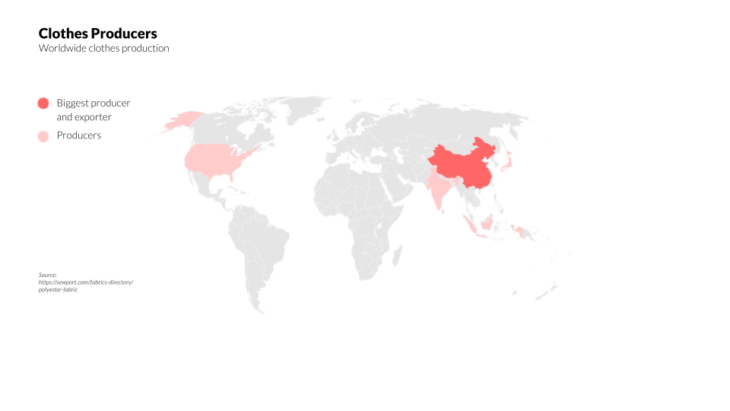
“It’s crucial to remember that the PET used to manufacture the polyester fabric is the same petroleum-based plastic used to make a lot of the synthetic consumer goods we use every day.” This plastic is used to make food containers, water bottles, and a variety of other industrial and consumer items.
Polyester fabric may be used to cushion chairs, couches, and cushions and in a wide range of garments, from ordinary shirts and jeans to suits, coats, socks, and underwear.
Practically everything else that may be worn for casual, business, or formal situations is made from polyester fabric.
According to a 2006 survey, “China is also the world’s largest polyester market, making it the international polyester industry’s epicenter.”
Polyester is made mainly in Asia as well as in the United States. After being manufactured in China and other Asian nations, “polyester fibers are mostly used in Asia to make garments and other polyester-based consumer goods.” These completed polyester clothes are subsequently shipped to a variety of Western and non-Western nations.
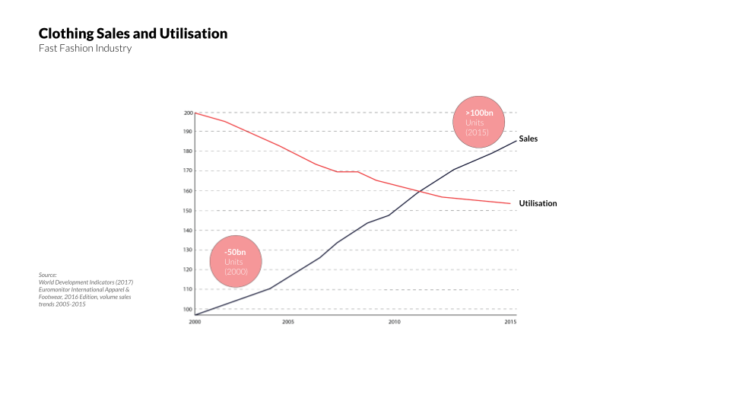
“Raw polyester fiber is now priced at around $1 per pound,” but it changes often. Even when minor changes are taken into account, polyester remains one of the most cost-effective textile materials available, contributing greatly to its global appeal.
While price differences between polyester and other textiles normally equalize by the time this fabric reaches the consumer market, “polyester’s low global pricing has historically contributed to the fiber’s overall success in consumer garment applications.”
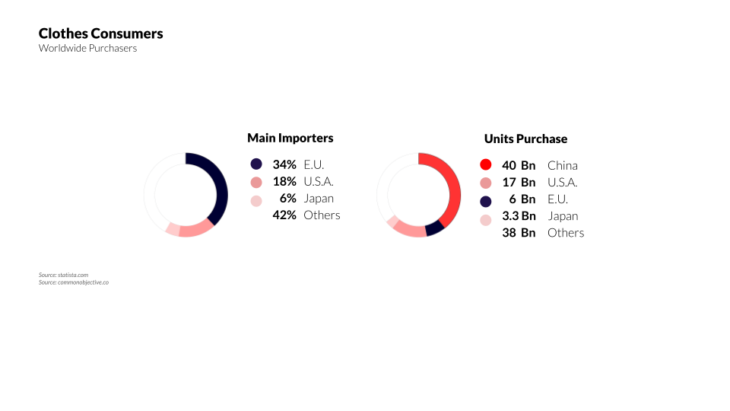
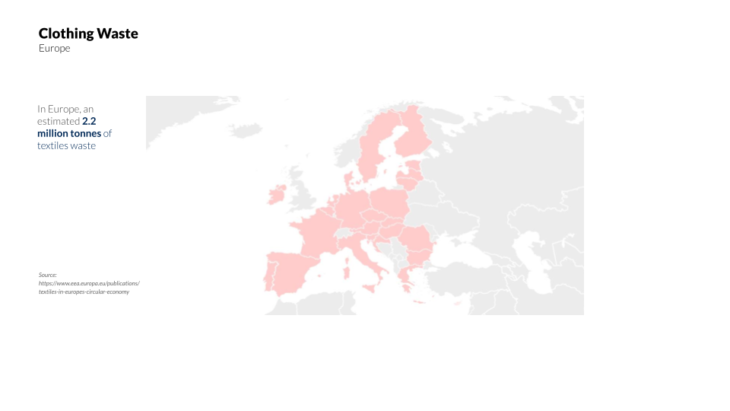
Polyester has a negative influence on the environment in general. From manufacture to use to disposal, this fabric has severe environmental repercussions at every stage of its life cycle. “After refinerie s produce petroleum, more refinement steps are necessary to produce the ethylene used in polyester production.” These extraction methods are inefficient and release more pollutants into the environment.”During the conversion of ethylene into polyethylene terephthalate fibers, more harmful synthetic byproducts are created, and the dyes and treatment processes used by polyester fabric manufacturers may also wind up in the environment, damaging ecosystems.
When polyester reaches the consumer market, its harmful impacts on the environment will continue. According to the Environmental Protection Agency: “Washing polyester fabrics by hand or in washing machines releases small synthetic microfibers into the water system.” People ultimately reject polyester clothing, just as they do all other sorts of apparel. Polyester does not degrade naturally in the environment, unlike biodegradable fibers like wool, cotton, or silk. While it is hard to predict how long polyester will remain in the Earth’s ecosystems before dissolving, environmental experts concur that “synthetic materials such as polyester could take decades to totally disintegrate owing to natural environmental circumstances.” “Polyester affects the environment at every level of manufacture, and it eventually accumulates in the world’s ecosystems with no feasible techniques for removal.”
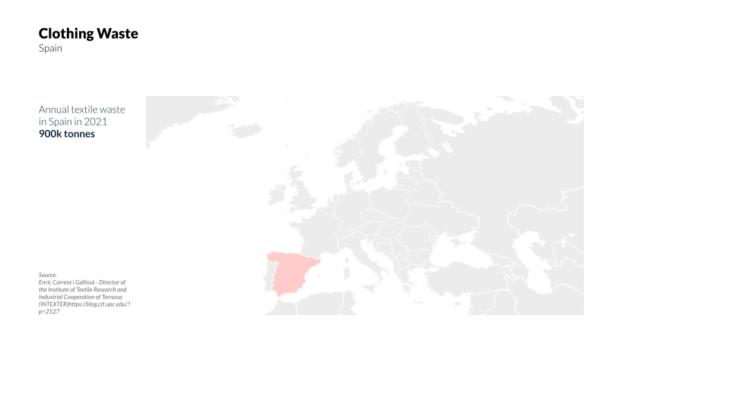
If we keep buying clothes at our current rates, “sales would reach 160 million tonnes in 2050”, which is three times what we buy now. With increased demand, reduced consumption, and a growing global effect, it’s more crucial than ever to think of innovative strategies to limit our environmental impact.
The circular economy’s principles will help us reduce textile waste and capture the value of textiles after they have been used.
Circular economy thinking will “reduce the amount of greenhouse gases and dangerous chemicals emitted into the atmosphere, lessening the adverse effects of textile waste on the environment.” Thanks to clever design, textiles will have a secondary purpose thanks to clever design.
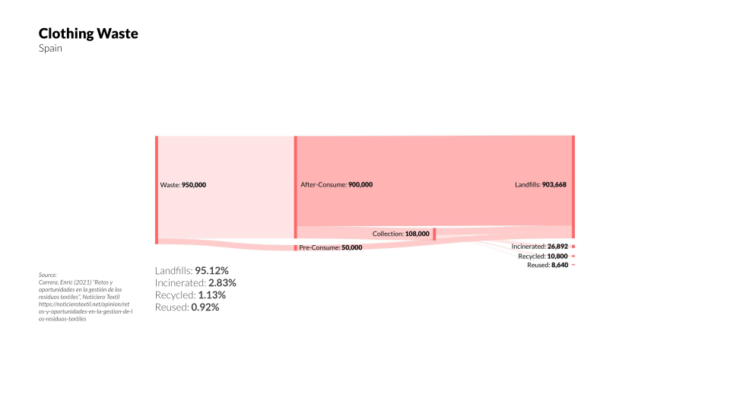
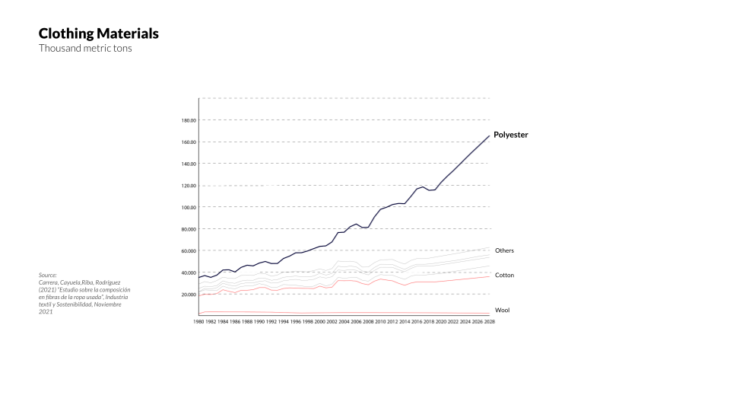
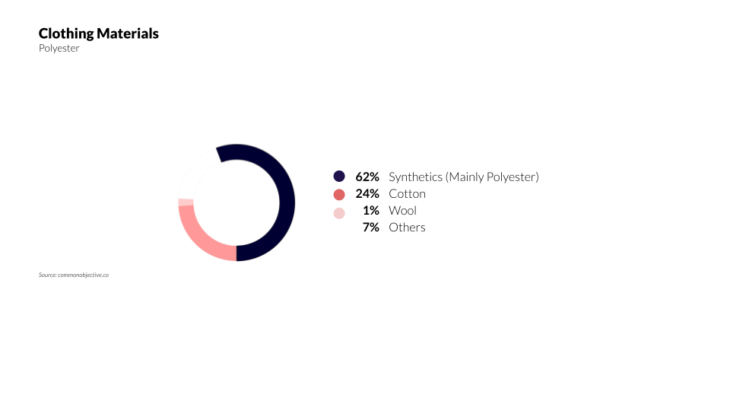
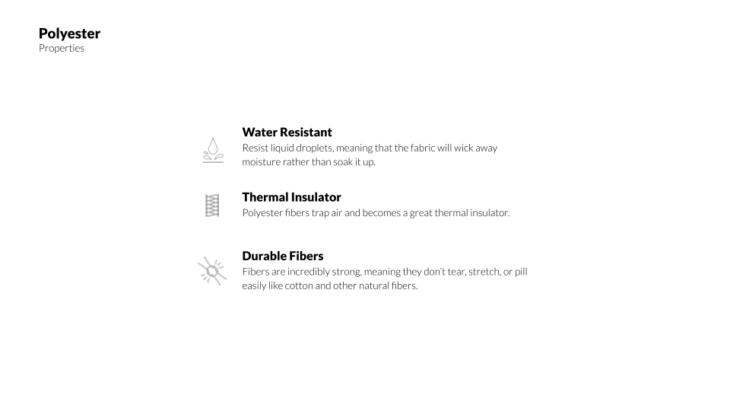
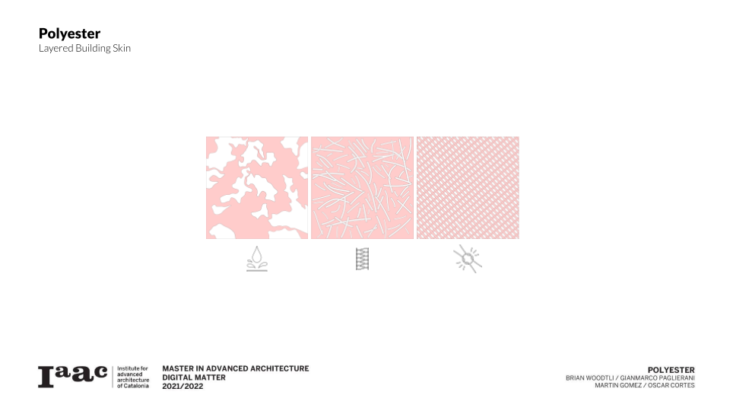
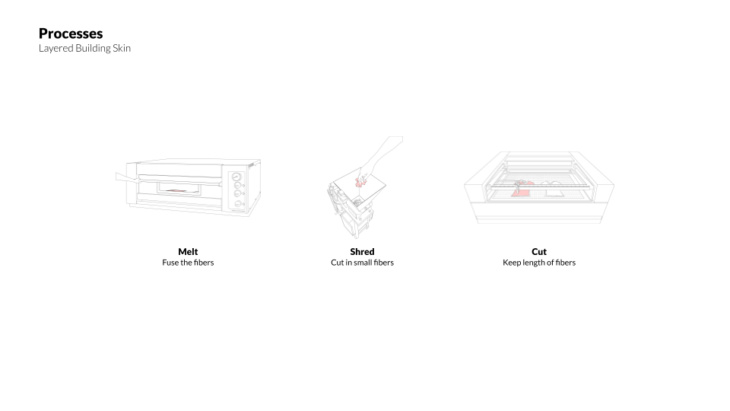
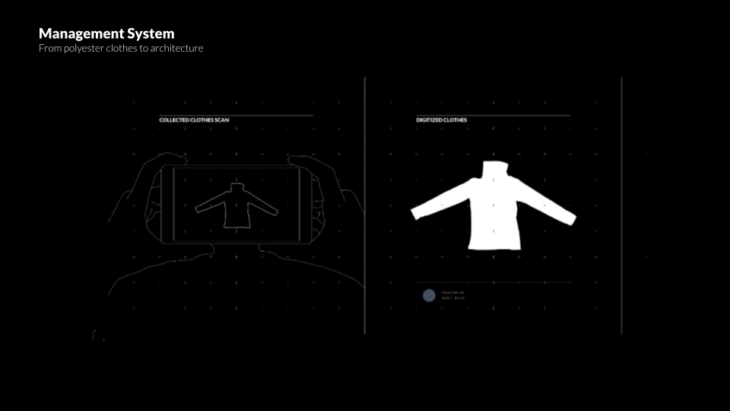
To gather the necessary clothing, it is envisioned to work in three different ways: involving the community to work directly with the people through the use of potential apps; working together with local cooperatives that already collect clothes; and thirdly, with fashion clothing industry initiatives that run recycling campaigns.

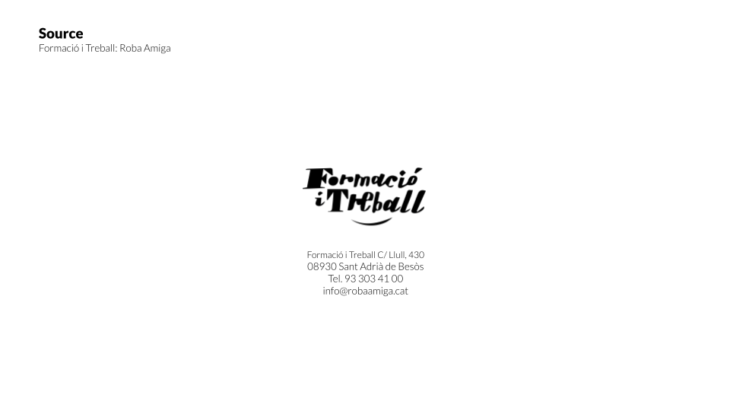
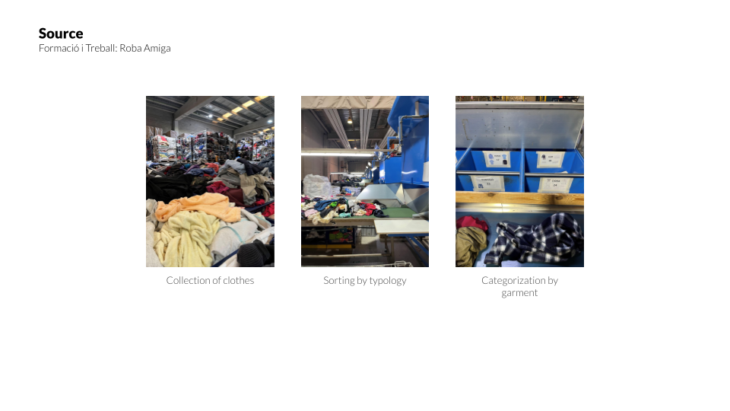
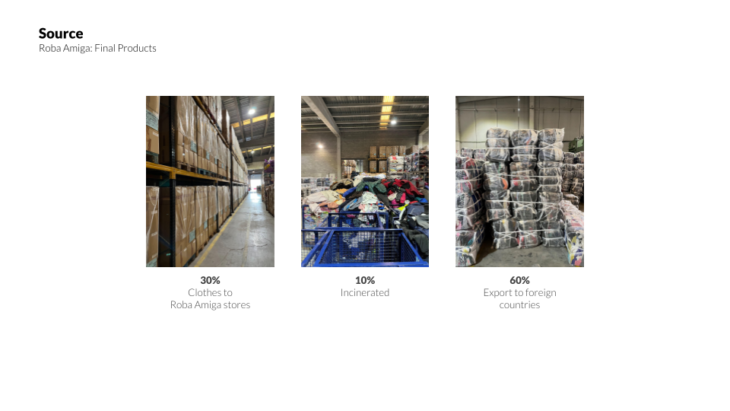
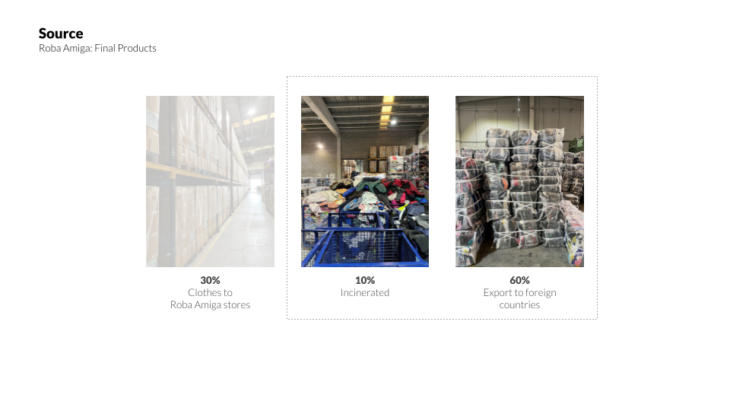
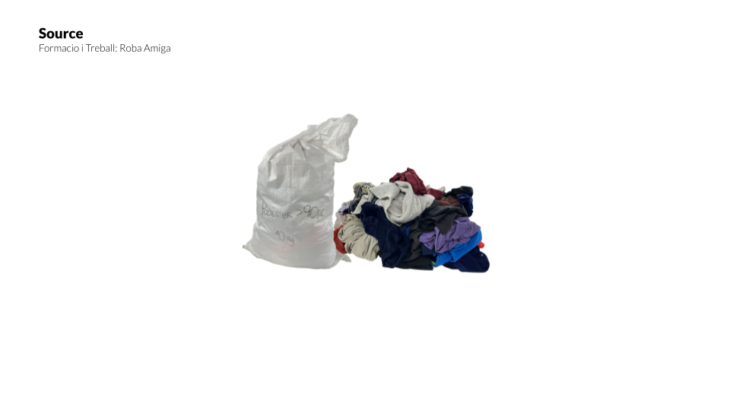
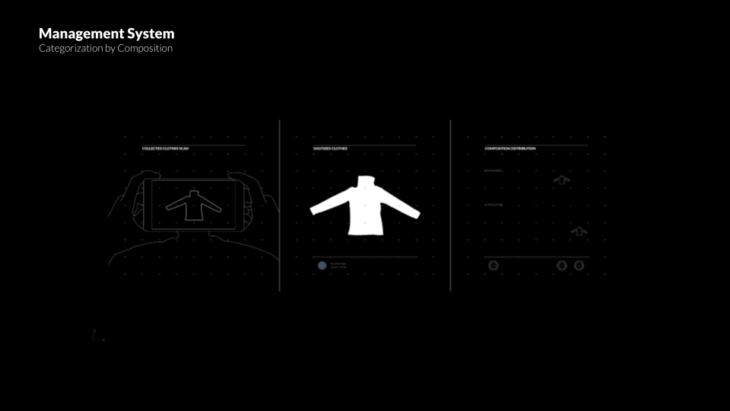
In order to fabricate the three different layers for the module, the use of different machines and tools was needed. The main material used was polyester in different states, but the implementation of extra materials was required to assemble all layers together. For the inside layer, the fabric was cut with the laser cutter to achieve the exact measurements needed. In the second layer, the insulation was accomplished by shredding the shirts in the shredding machine. Finally, for the outside layer, the use of a heat press and an oven was needed for experimentation in order to melt the material and produce a waterproof layer. Once the three main layers were obtained, the CNC milling machine was used to cut the pieces of wood to create the frames of the modules.
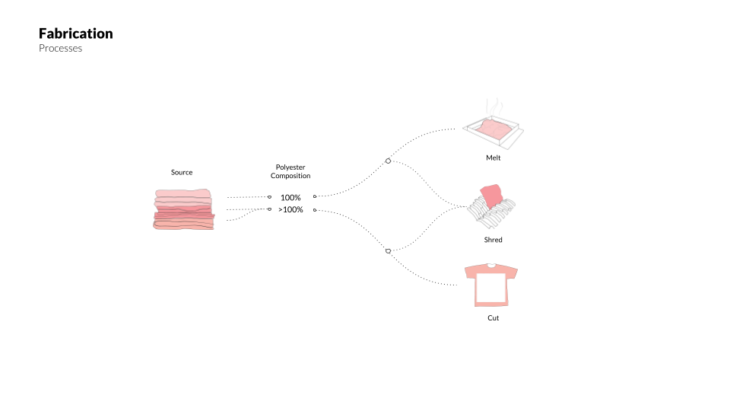
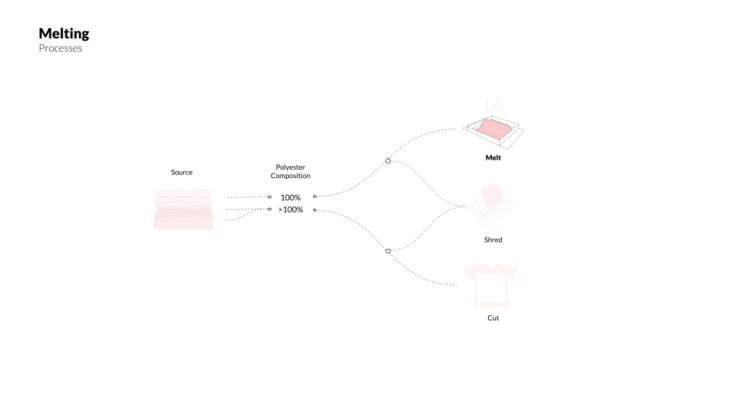
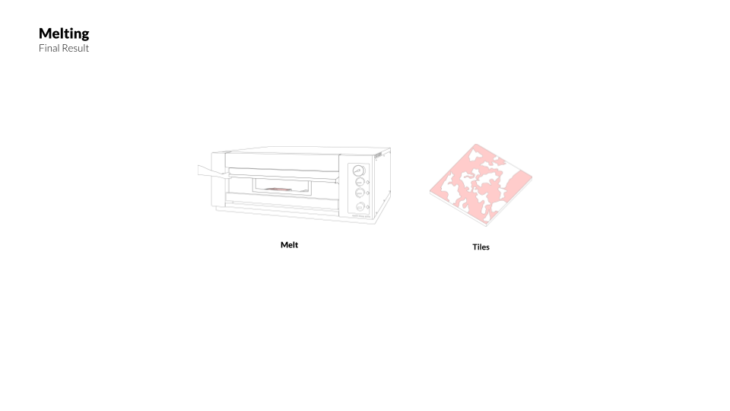

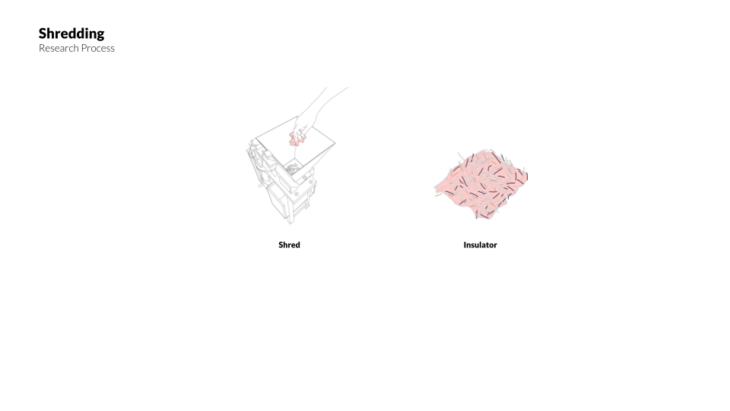
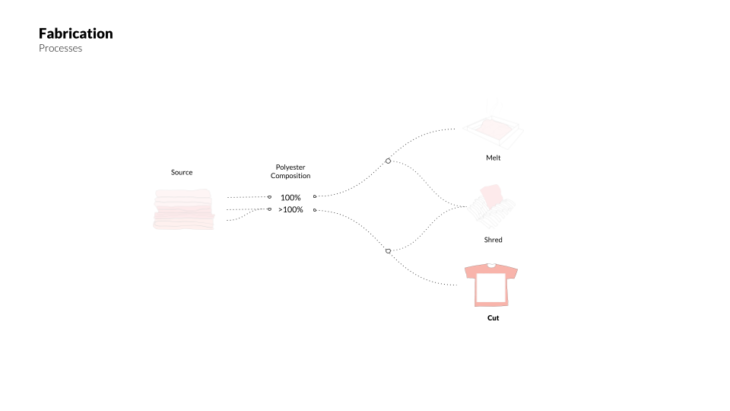
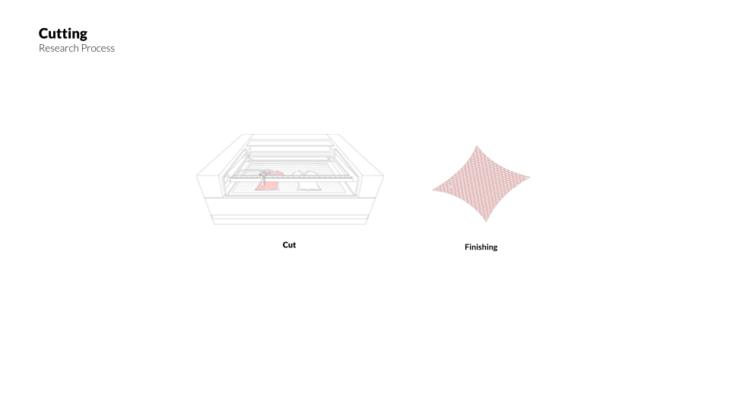
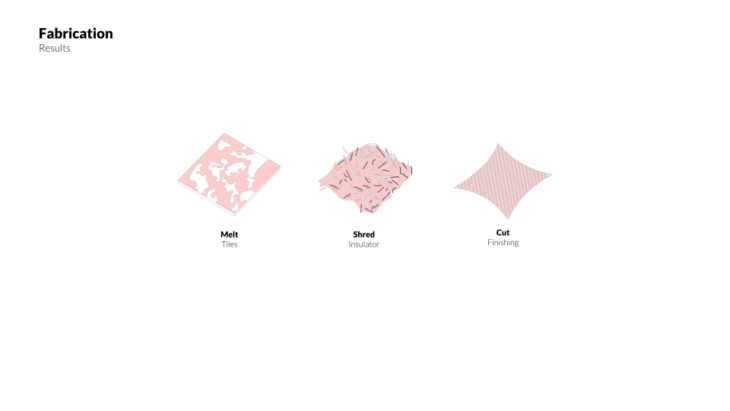
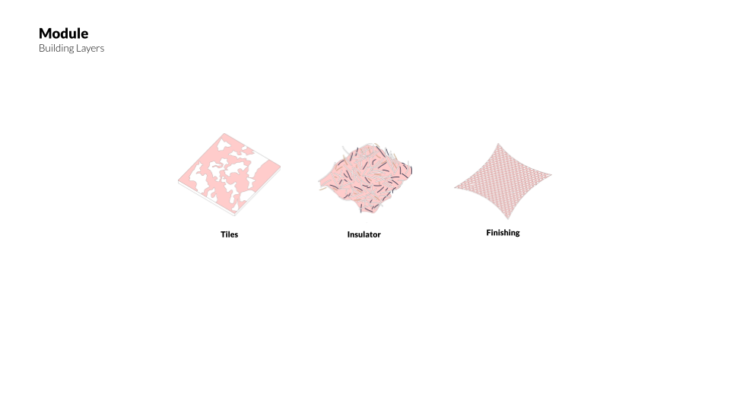
The three main components of the module have a specific purpose in the skin, where the waterproof layer answers to the requirements of an outside layer, the insulator is an in-between layer that creates a space where air is retained, thus creating a barrier between the interior and exterior, and on the third hand, an interior layer that works as a soft finish. The three layers detailed above focus on the performance of the building skin, so a structural layer was needed to set an architectural component. This way, the cassette modular system is created as seen in the image. The cassette is conceived as a polyester-based modular system, which allows it to fit into any traditional building construction. The cassette has inherited three main functions. The first one is a little slope and unalignment, to create water and air tightening. Wood dowels and steel cables for the interlocking and structural tension are used, and thirdly, service zones are considered so it can be coordinated with electric projects.
Also, the cassette allows different applications where the layering order can change, being reorganized, always from an insulator center layer, as interior/interior, interior/exterior, or exterior/exterior. This way, the system can be applied to a variety of contexts and uses that can match different needs. The system is conceived to be easy-to-assemble, where the stacking of cassettes, whether vertical or horizontal, is intuitive and can be done by a non-professional workforce.
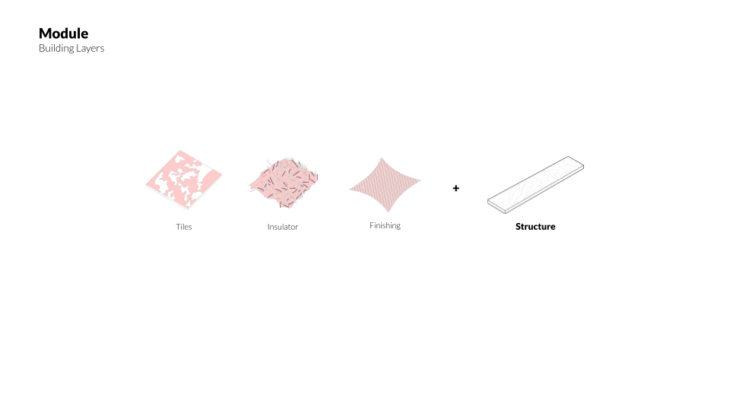
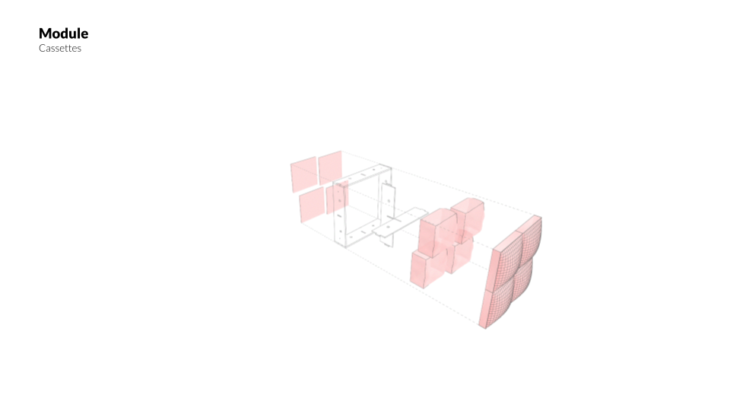
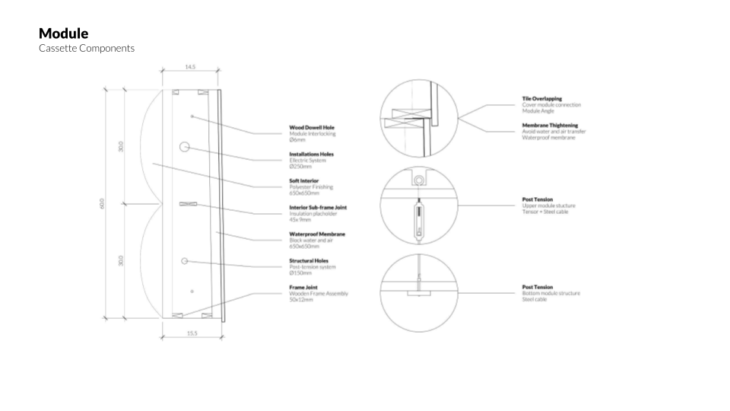
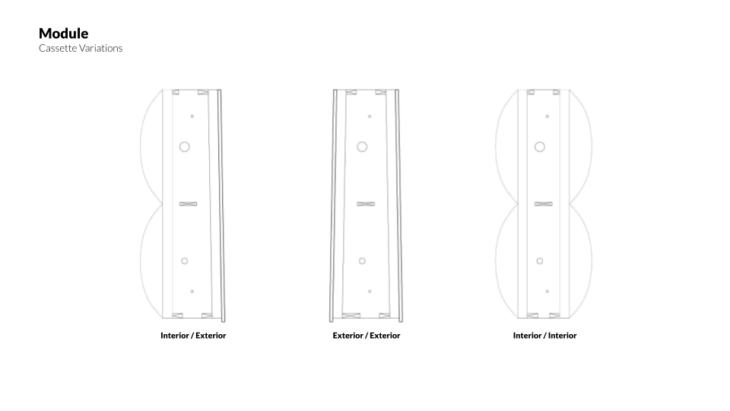
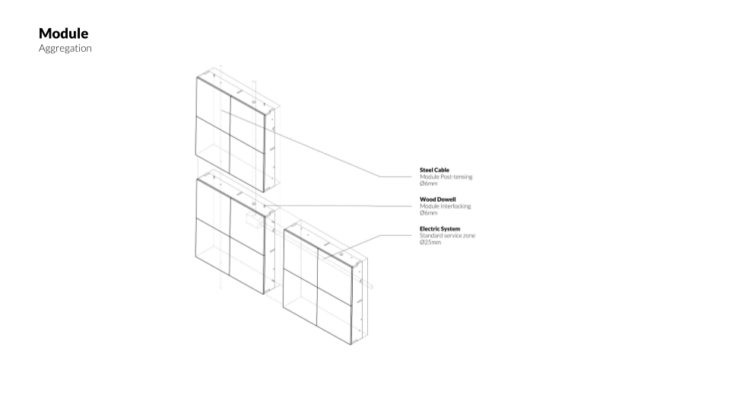
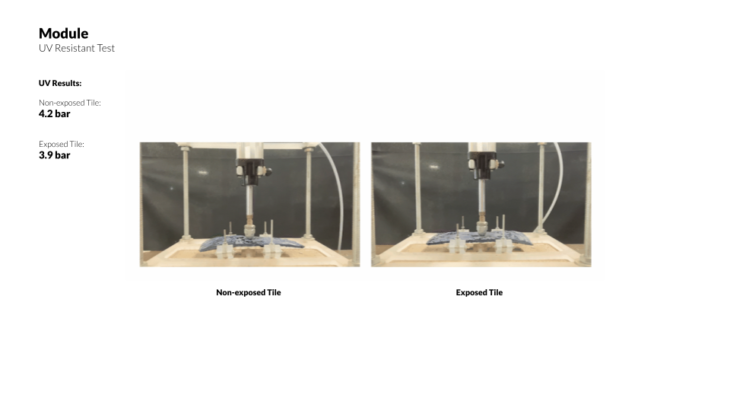
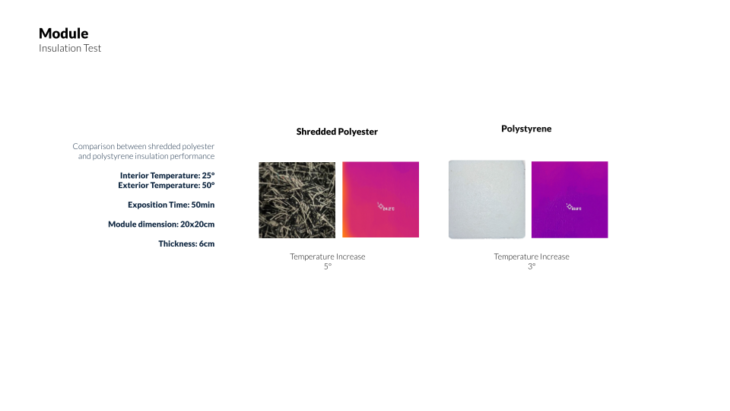
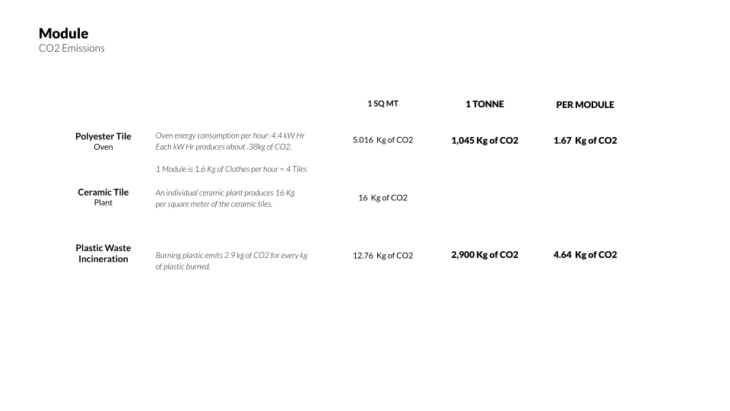
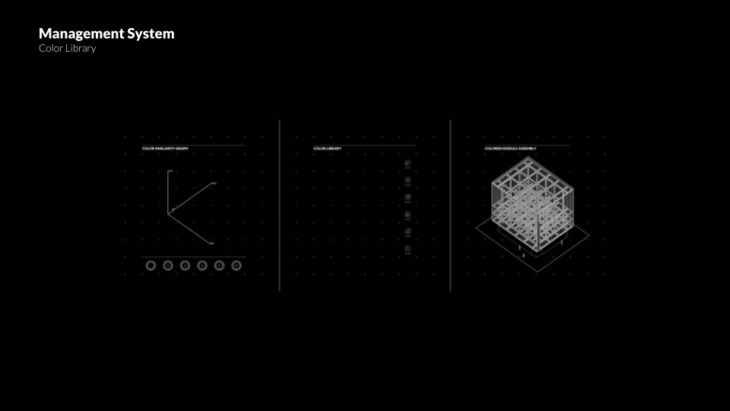
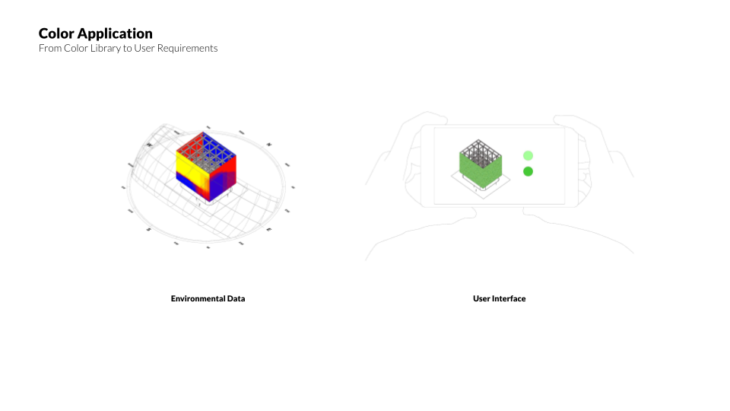
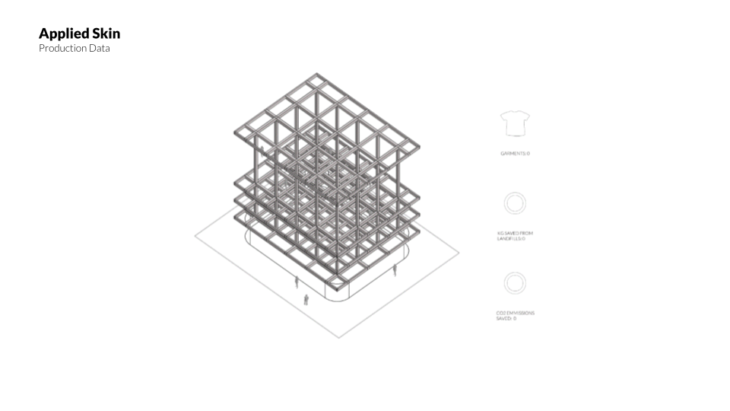
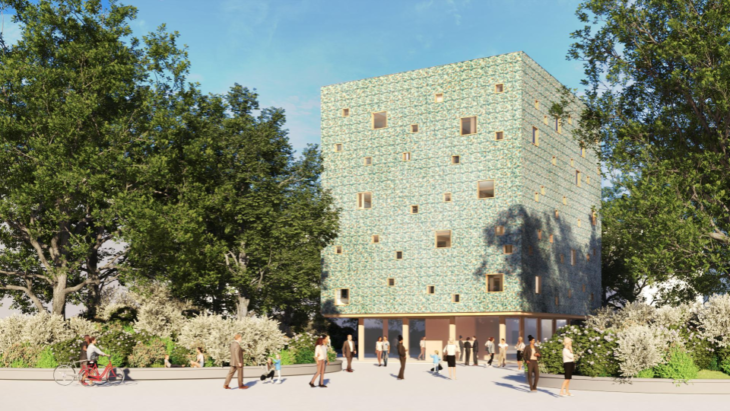
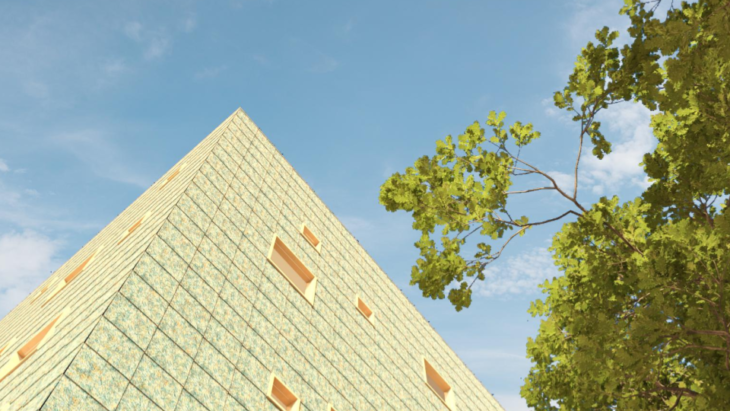
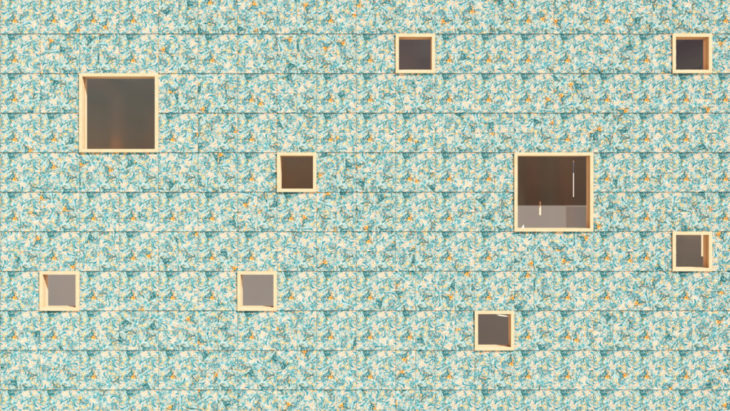
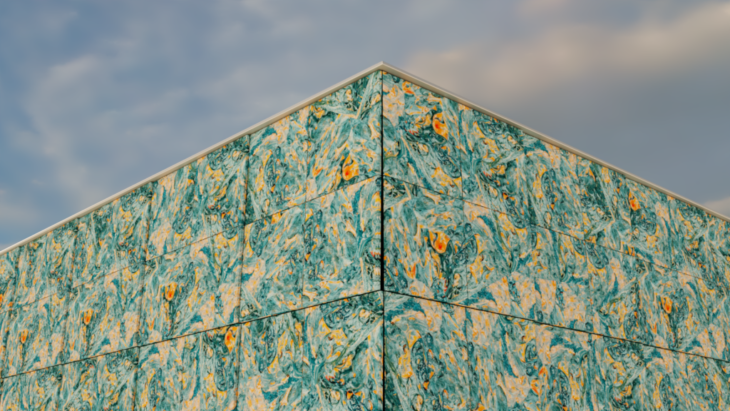
texTILE is a system that makes the most of polyester as an architectural material. The variety and uncertainty of color results is completely related to the collection process, so it creates a workflow and management system from garment to architecture, which opens an interesting discussion on architecture and its material source. On the other hand, texTILE takes the material and uses it in three different processes, where melting its fibers is still not fully solved. During the research, a series of experiments were conducted, using different tools, machines, and infrastructure to achieve a final “recipe” to create the melted tiles. Even though the final result shows a clear result, the research needs further development in order to reduce the brittleness of the material and to avoid the cracking and bending when cooling down. Overall, texTILE is a project that questions traditional materials for construction and deepens into recycling systems, extending the lifespan of waste polyester. It transforms waste into architectural components and contributes to the discussion on upcycling materials for a more sustainable architecture design.